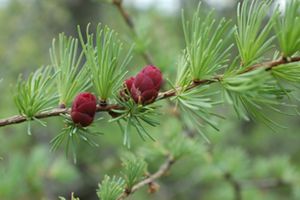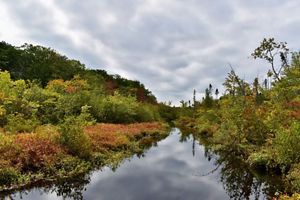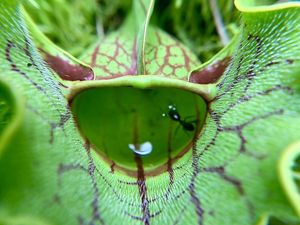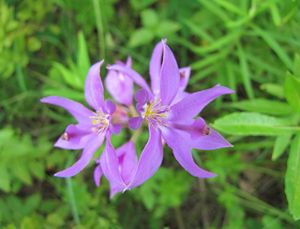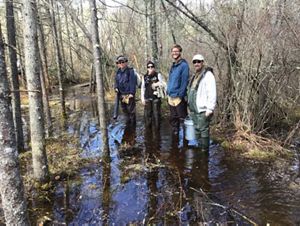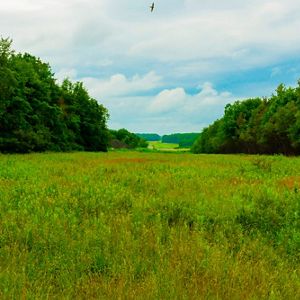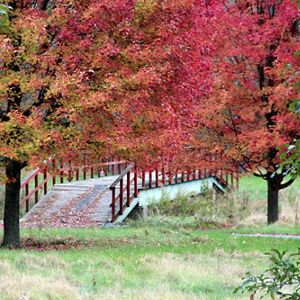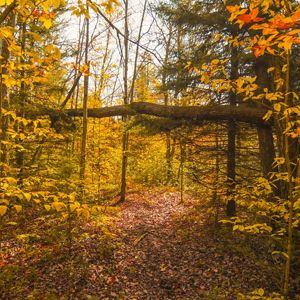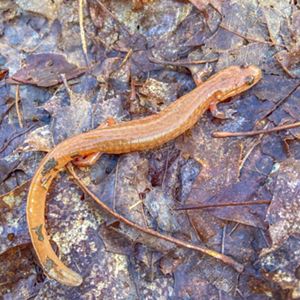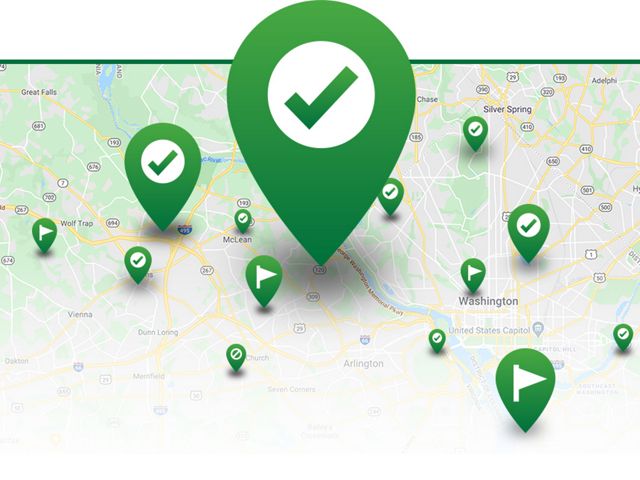Roger Spotts has long been one of the Tannersville Cranberry Bog’s most recognizable and knowledgeable ambassadors. For over 40 years, he has led guided tours on behalf of the Kettle Creek Environmental Education Center in Monroe County, sharing his wide-ranging expertise with countless visitors. He is beloved in the community—particularly among local 4th-grade students, who tour the bog each year—and serves as an invaluable source of knowledge about the history, ecology, and unique characteristics of this special landscape.
TNC extends its heartfelt thanks to Roger for his invaluable service and his tireless commitment to educating the stewards of tomorrow. As he prepares to retire in 2025, we invited him to share a few of his favorite reflections from his career.
How did you first learn about the bog, and what drew you to it?
My background in wildlife and land management really laid the groundwork for my career. I arrived in the Poconos in 1983 as a naturalist with the Bureau of State Parks. I’d gone to college at Penn State for wildlife biology, and that’s always what I’d envisioned I’d end up pursuing. But when [renowned local naturalist] Don Miller introduced me to the Tannersville bog, I’d never seen a habitat like it before. I hadn’t ever traveled north to see a boreal bog before, so this was a brand-new experience. I’d heard of Venus fly traps, of course, because they get all the press. But I remember being fascinated by the insect-eating plants and all of the other wildlife in the bog ecosystem that you didn’t always see, but could find evidence of.
What would you say is your favorite part of environmental education?
My favorite part of being an environmental educator is all the interactions I’ve gotten to have with people coming to see the bog. We’ve had 4th graders from Monroe County schools coming to visit for 40 years now. It’s been a great partnership and the basic program is still the same. It’s amazing: The kids don’t have their tech with them, just a clipboard. They make notes or draw things that they see. Fortunately, I never have to worry that they’re not going to be interested. The minute they see the insect-eating plants or they realize they’re actually floating on the boardwalk instead of standing on solid ground, they’re completely engaged.
Any particularly memorable bog tours over the years?
We’ve had a number of state representatives and county commissioners visit over the years. There was a group of Japanese dignitaries once that The Nature Conservancy brought through. We had some Russian scientists who brought a translator and they shared that they had similar boreal bogs back home, even if some of the species were different.
Another memorable encounter was when a group of 4th graders and I came face to face with a black bear on the boardwalk. After a minute, it moved away—and we weren’t about to go after it—but I’m sure those kids still talk about that to this day.
What big changes have you observed since you first started?
The audience has changed over the generations and so has technology. You used to just have a camera, or maybe a field guide that you pulled out, and you’d have to try to match a picture or take it back to show someone to try to identify it. Today, you have your smartphone. And that tech element can be a very good thing in many ways, but you do lose a little bit of that old wonder, too.
But one of the most impressive things that really hits home is when you stand in the middle of the boardwalk, away from the traffic and housing of Monroe County, and you realize that this bog itself hasn’t fundamentally changed in thousands of years. It really gives you a deep sense of optimism that it is possible to protect natural spaces. My greatest hope is that the work I’ve done has helped TNC raise awareness and share its mission with others not just in Pennsylvania but maybe even around the world.
What does retirement hold for you?
I’m looking forward to having more time to fish, which is a big passion of mine. But I’m not going to disappear from the bog. I don’t ever want to stop being an educator and will still be around helping out whenever I can and enjoying all the people that I get to meet.






